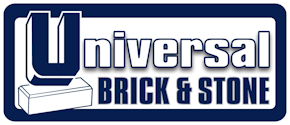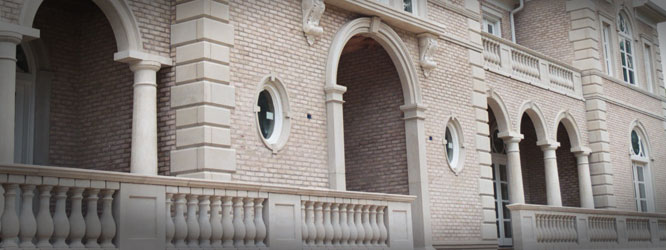Cast Stone
Cast Stone Elegance
Cast stone is an elegant architectural stone product that has been used in buildings for many centuries. The earliest known use was around 1138 A.D.
Cast stone was first used in London in the early 1900s gained widespread acceptance in America in 1920 and continues to this day.
CAST STONE GUIDE
MANUFACTURING
Cast Stone is regarded as the most labor-intensive of all concrete products via the manufacturing processes. To ensure the success of the project, the detailer assigned to a Cast Stone job must have both knowledge and experience in understanding the architectural styles and designs.
DEGREES OF CUSTOMIZATION
Since most other building products are either more “standardized” in nature (e.g. brick or window units) or less visible (e.g. structural steel) the Cast Stone usually becomes the custom element of the building facade. Degrees of customization are standard, semi-custom, and custom. Standard are purchased items from a manufacturer’s catalog or inventory molds. There are no layout drawings of the Cast Stone for the manufacturer. Semi-custom Cast Stone are purchased according to the unit shapes on the contract documents. They are usually made to order either from custom or inventoried molds. The Cast Stone manufacturer provides no layout drawings, however some cutting of units in the field may be required. Custom Cast Stone are items strictly according to contract documents and according to shop drawings. They are usually made to order from custom moulds. The Cast Stone manufacturer normally provides layout drawings, however cutting of units in the field is usually not required.
PATTERN
Patterns for Cast Stone can be made from almost any material. The most common are wood, plaster, fiberglass, and rubber. Other materials are clay, gelatin, gypsum, Styrofoam, plastic concrete, and sand. For continental uses are semi-dry, steam cured, and earth concrete” which is neither “wet” nor “dry.” The two most widely used casting methods today are the “Vibrant Dry Tamp” (VDT) system and the “Wet Cast” method. Each method requires a meticulously proportioned mix design consisting of carefully graded and washed natural gravel and sand, combined with crushed graded stone such as , granite, marble, quartz, or limestone meeting the latest requirements of the ASTM C 33.
PRICING
Cost per unit depends greatly on individual component design, component repetition, specification, and bid documents. On average, Cast Stone costs less than quarried stone. This is because the Cast Stone product is molded and requires no further tooling after the initial pattern is made, and Cast Stone is shipped within the United States; cut stone is usually shipped from European countries.
SIZE
Rather than cost per lineal foot or cost per square foot, the wide range of sizes that can be made in Cast Stone makes it more convenient to view cost in terms of cubic feet per piece.
By including one flat unexposed side in the design of the individual piece production time and curing time will be reduced to a minimum, and costs will be kept low. Typical profiles with one flat unexposed side include a base, water table, banding, sills, header, and coping. If more than one flat unexposed side is designed such as L-shaped or U-shaped pieces, costs increase due to the intricate mold required and the additional production time. Pieces such as balusters and balls that require two-sided molds, with minimal unexposed surface, add costs due to the longer time to construct molds and extreme care that must be used during the production process.
PROFILE REPETITION
The more that an individual mold can be amortized over a production run, the lower the cost per piece, even if the length of the profile varies. Various piece lengths can made by using an adjustable filler or stop in the mold during the production process.
PROFILES & RUSTIFICATION
Cast stone can be molded to a variety of shapes and the architect is encouraged to exercise design freedom when drawing Cast Stone profiles. In contrast to natural cut stone, profiles with curves and bevels are encouraged because the additional cost to incorporate these shapes into molds is minimal compared to flat pieces with defined edges.
ORNAMENTATION
It should be noted that highly intricate designs that require making a model, a “positive” needed to make the mold be sculpted from clay or other material, adds to the cost. This would be the case when reproducing shapes on historical buildings.
COLOR
The more chromatic the desired color, the more each piece costs. Cast stone colors that are standard and that have no additional costs are the colors that are indicated as “Natural Colors.”.

